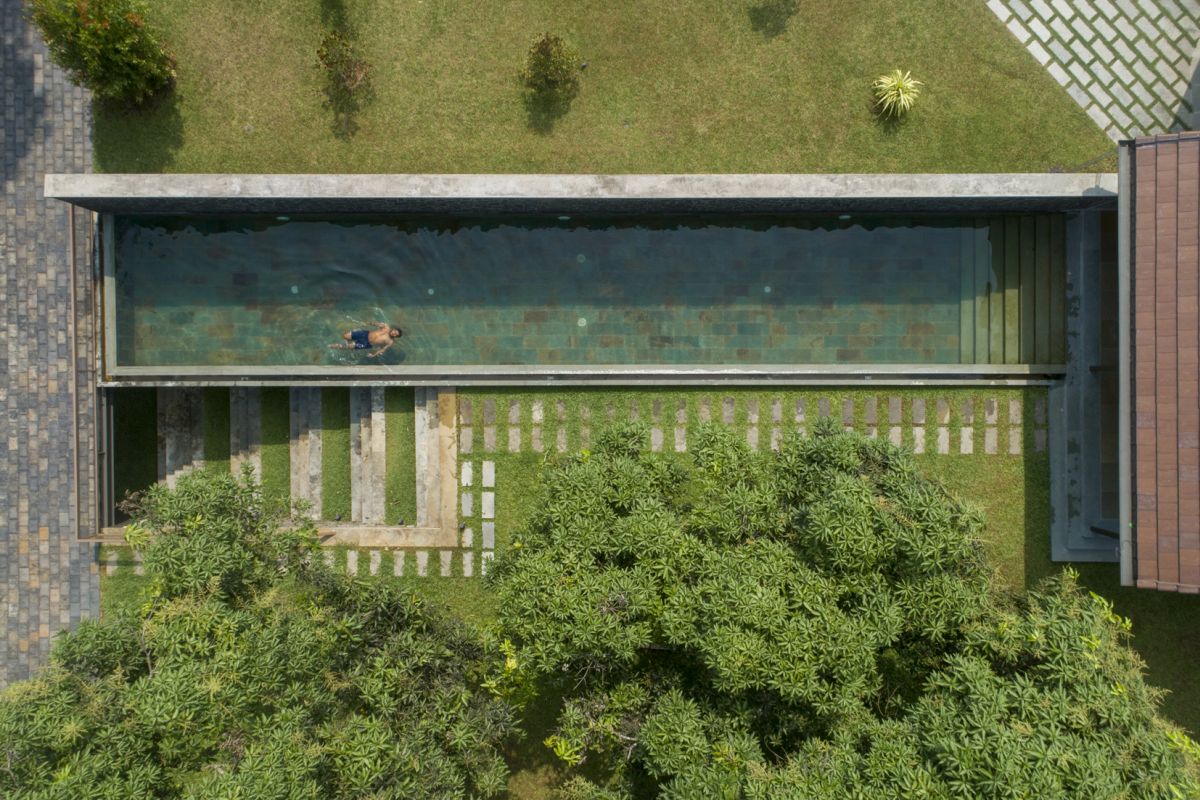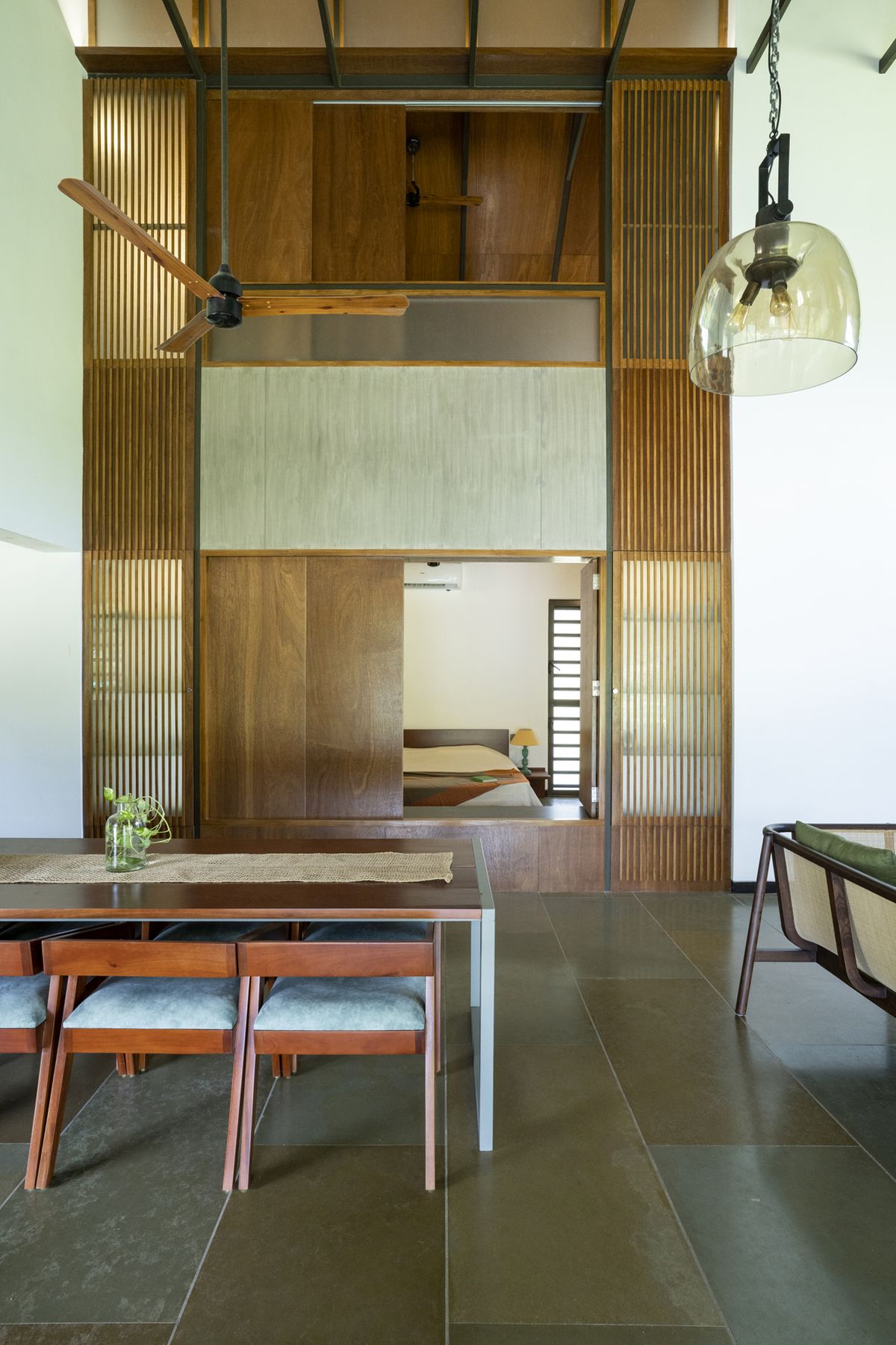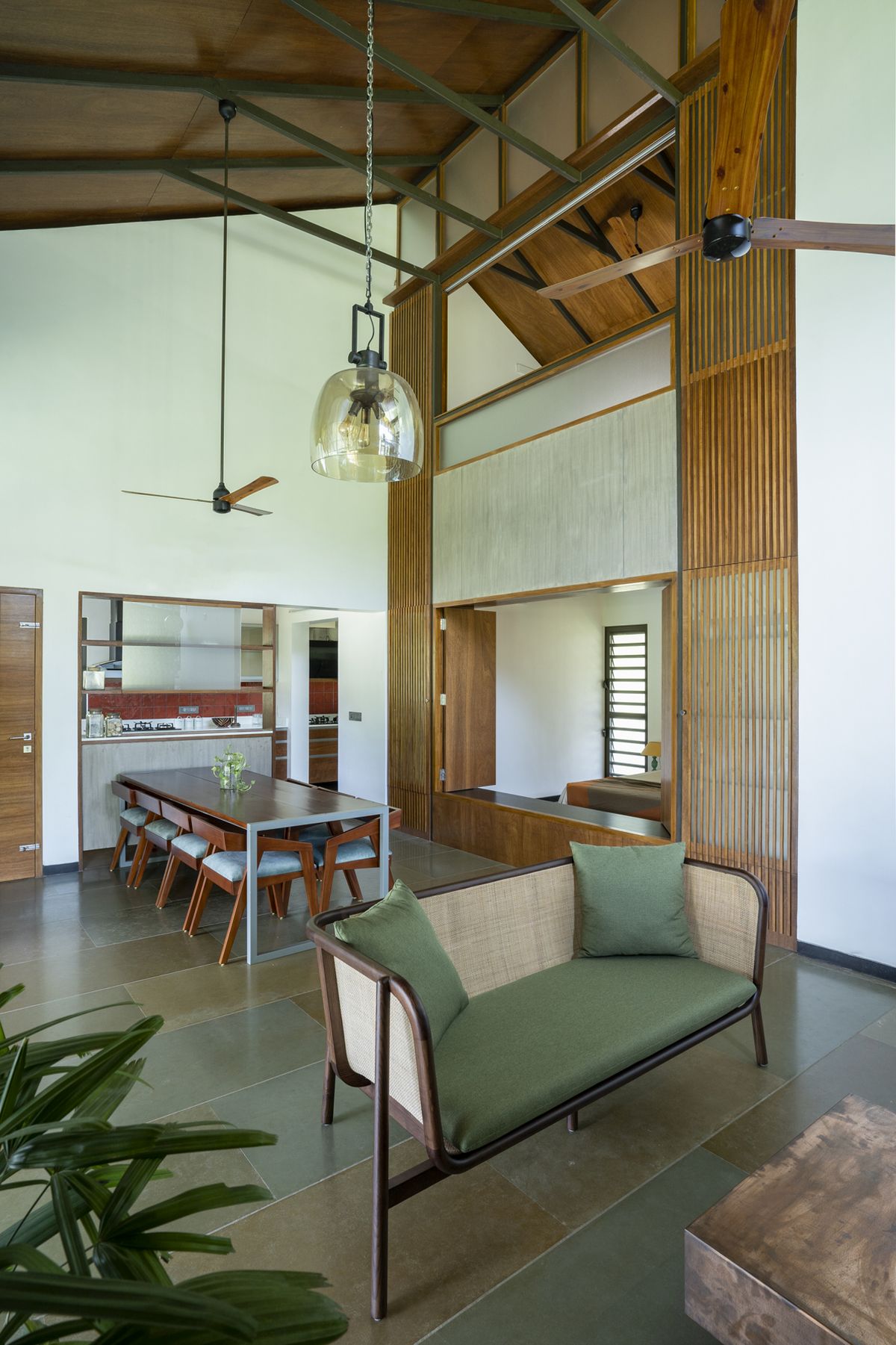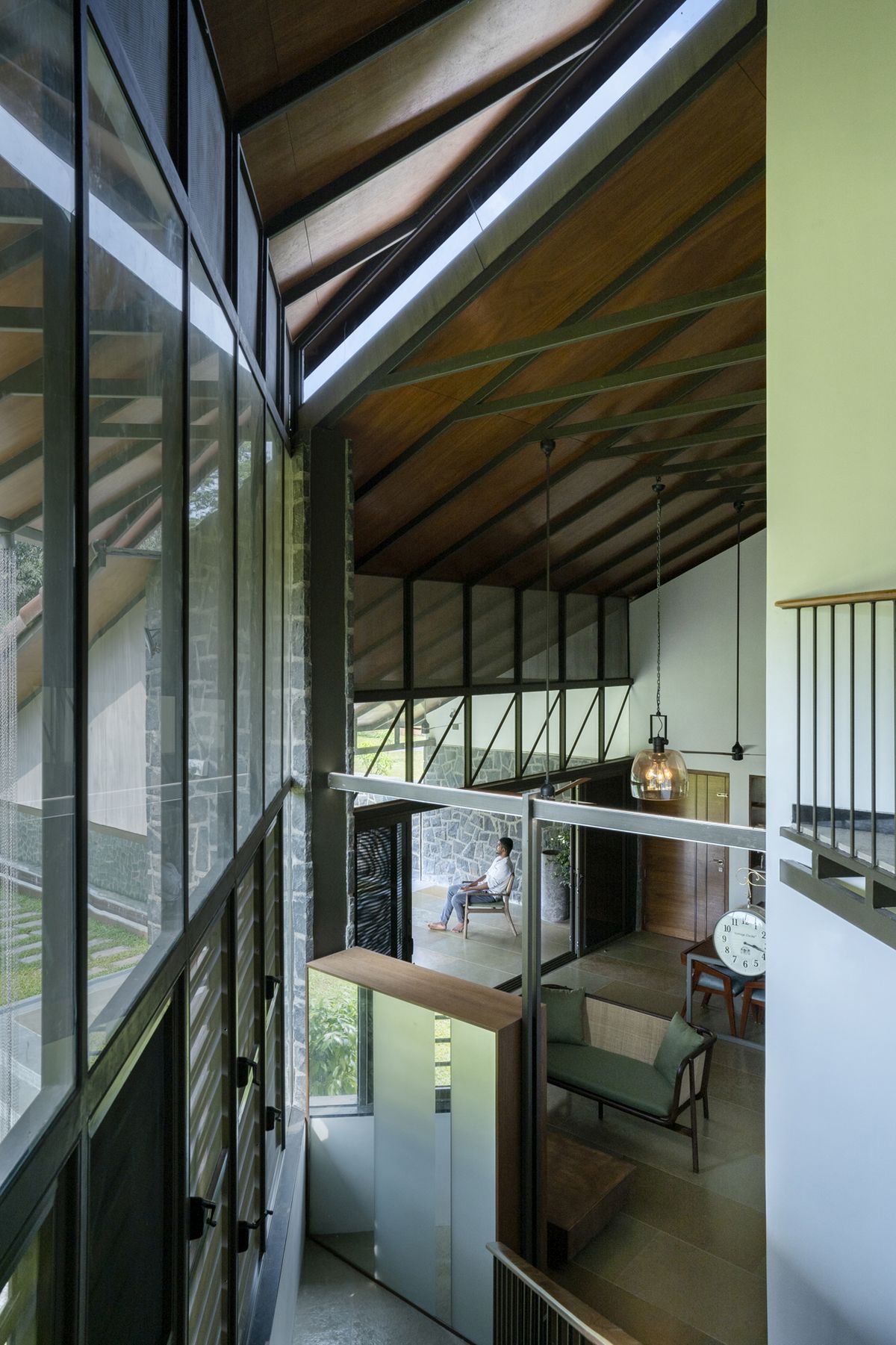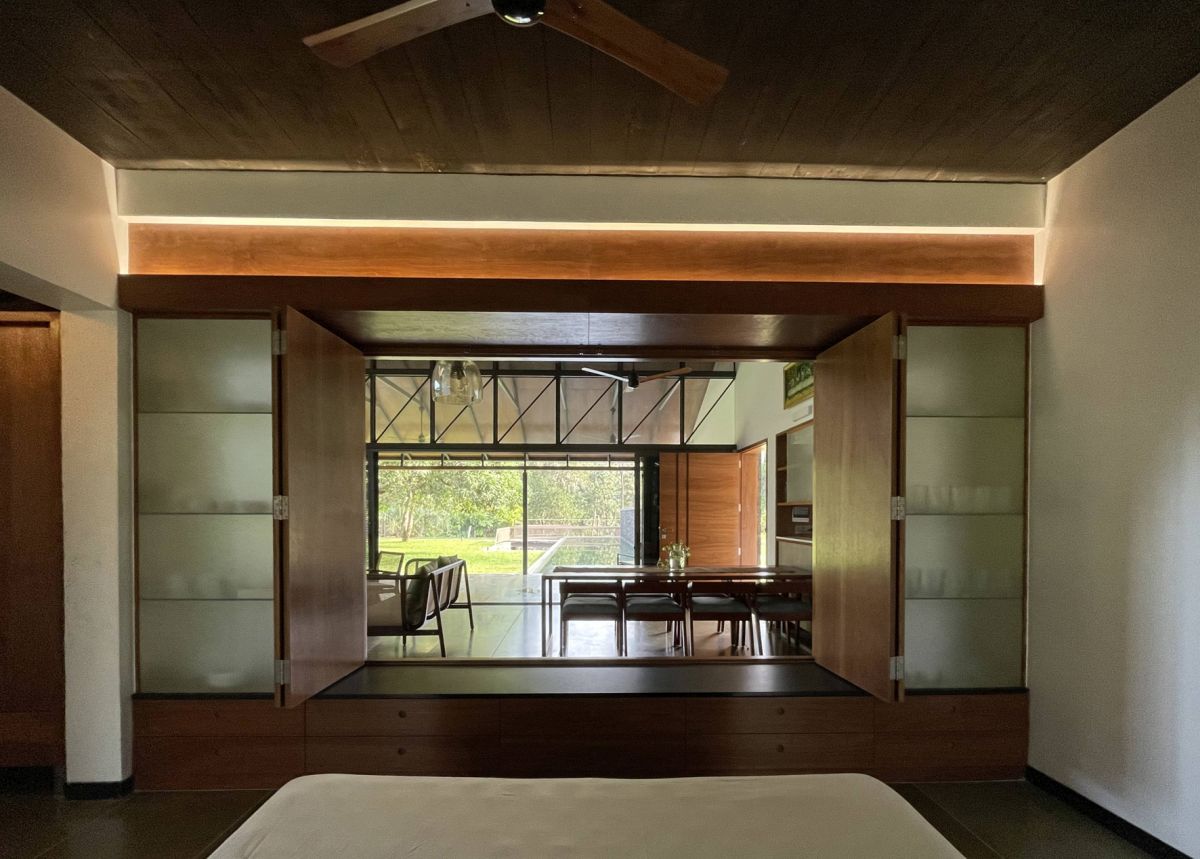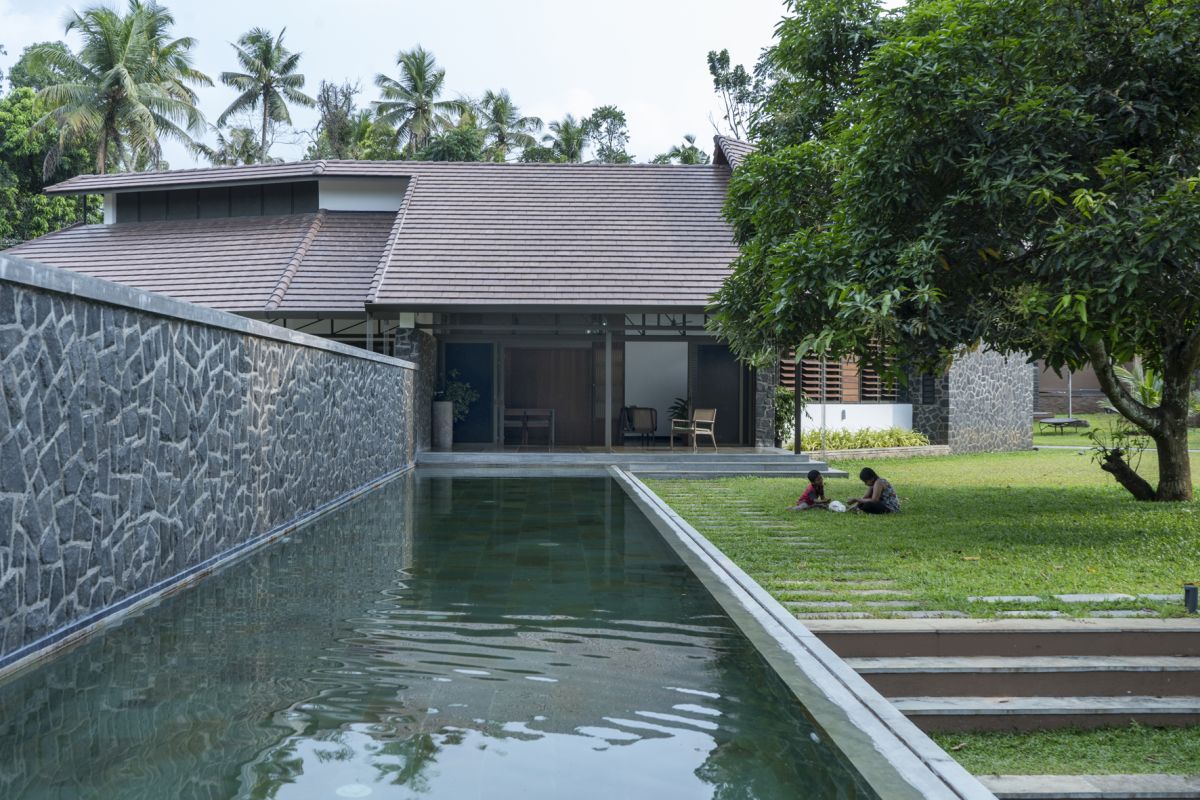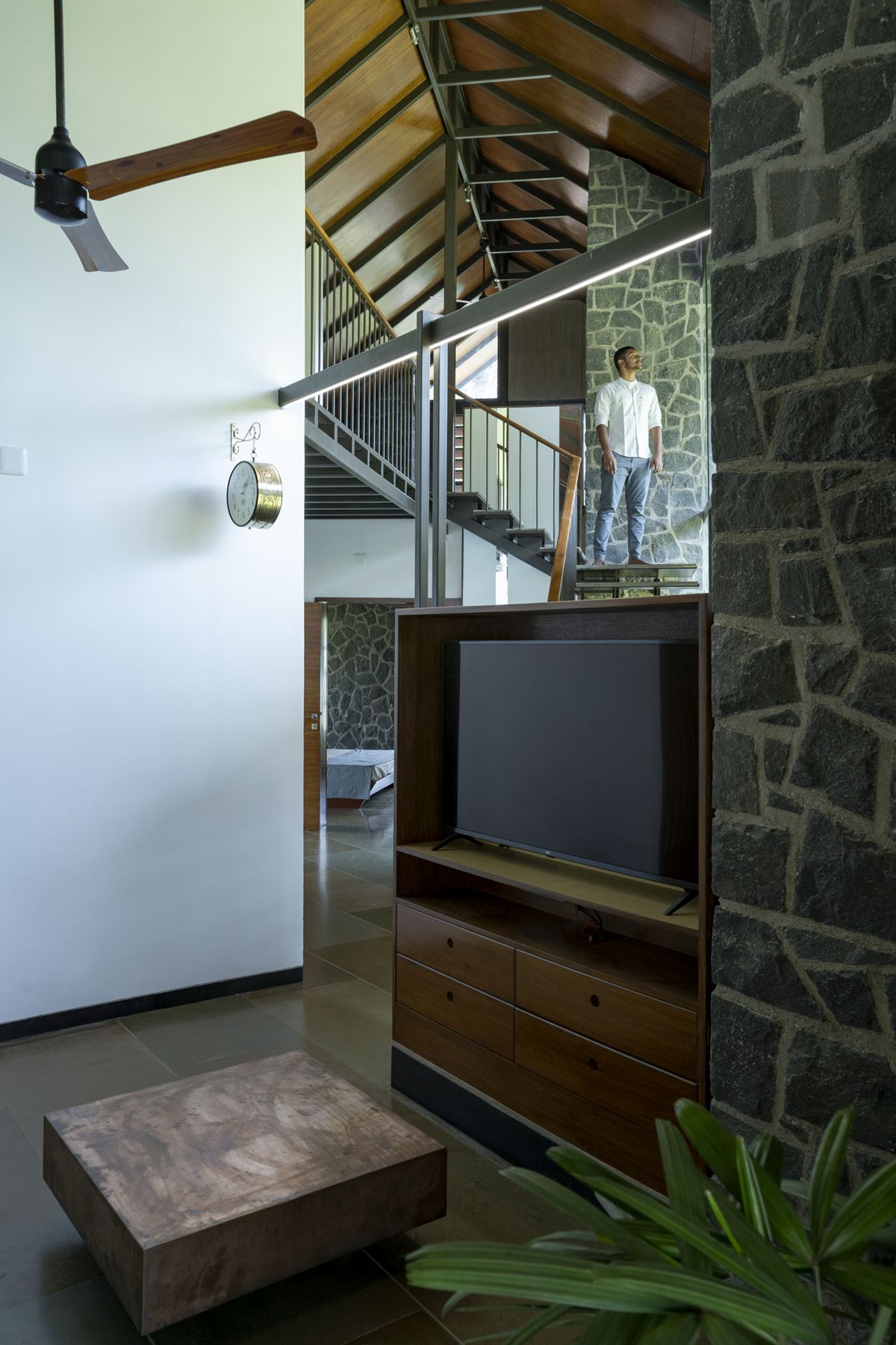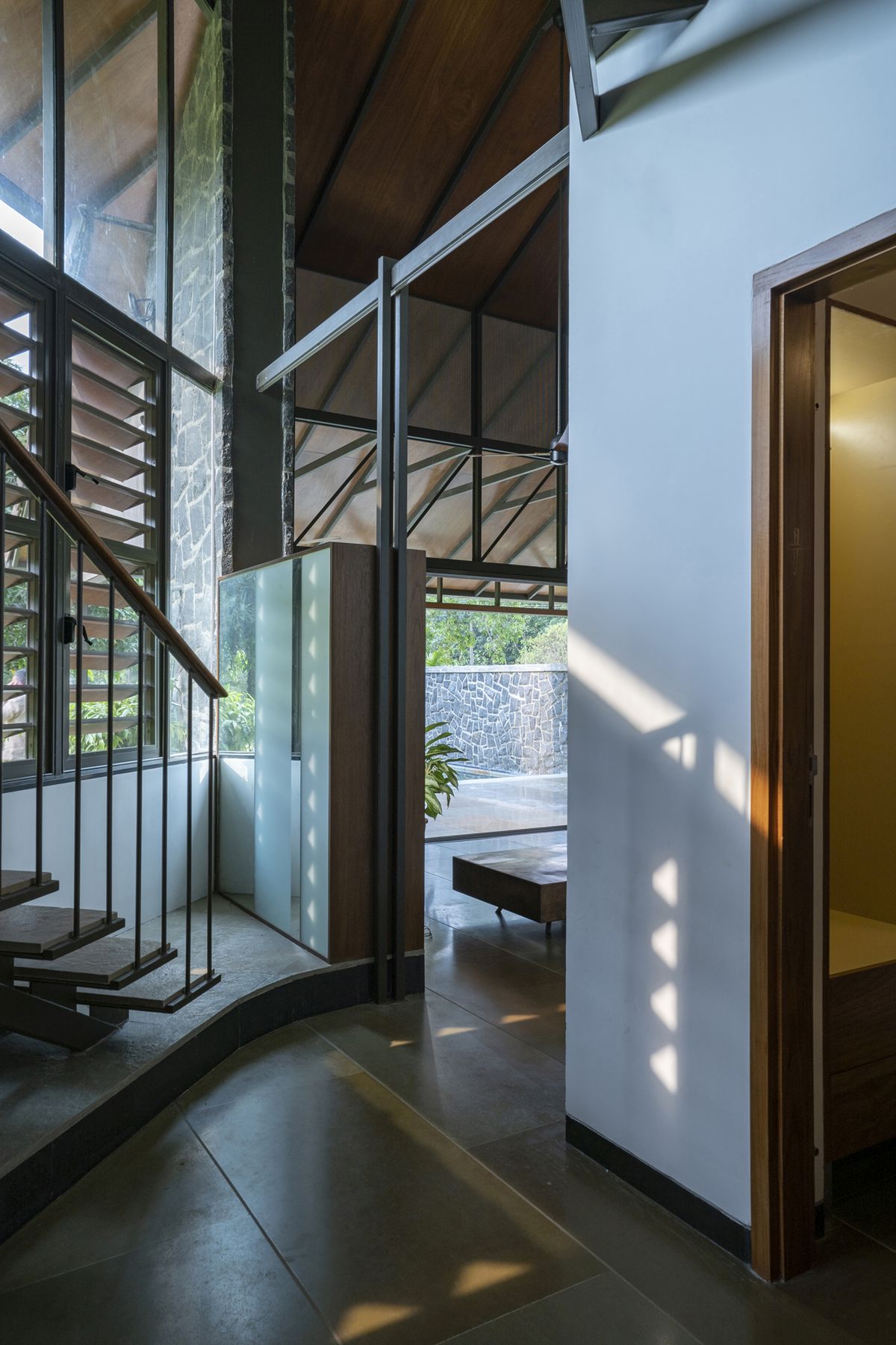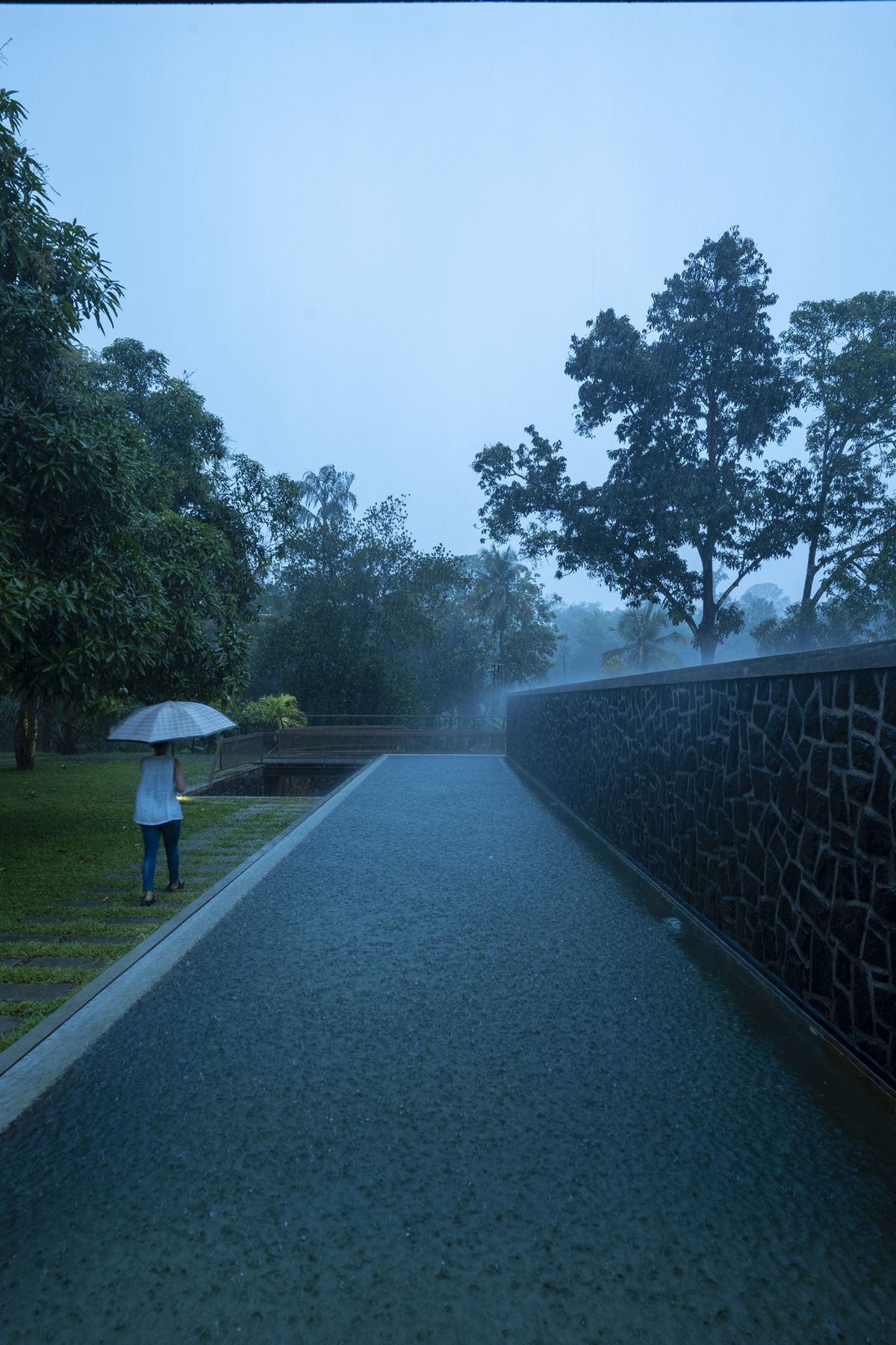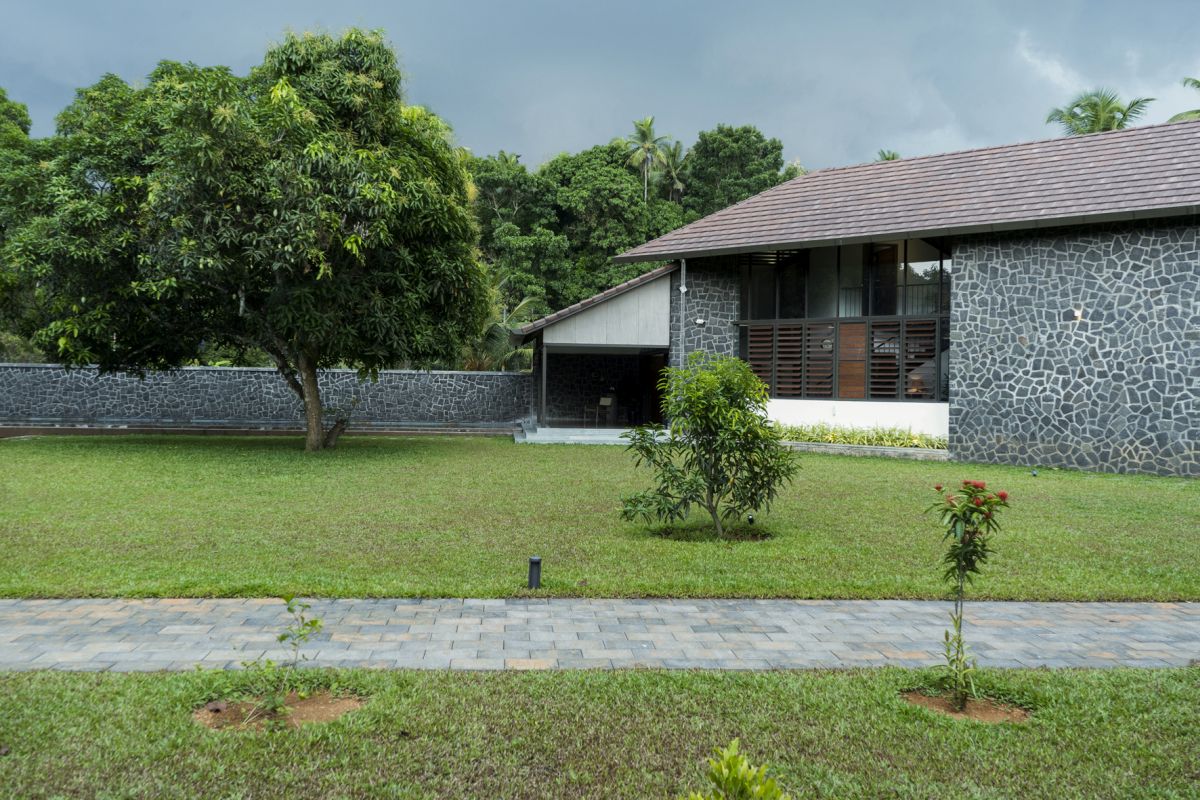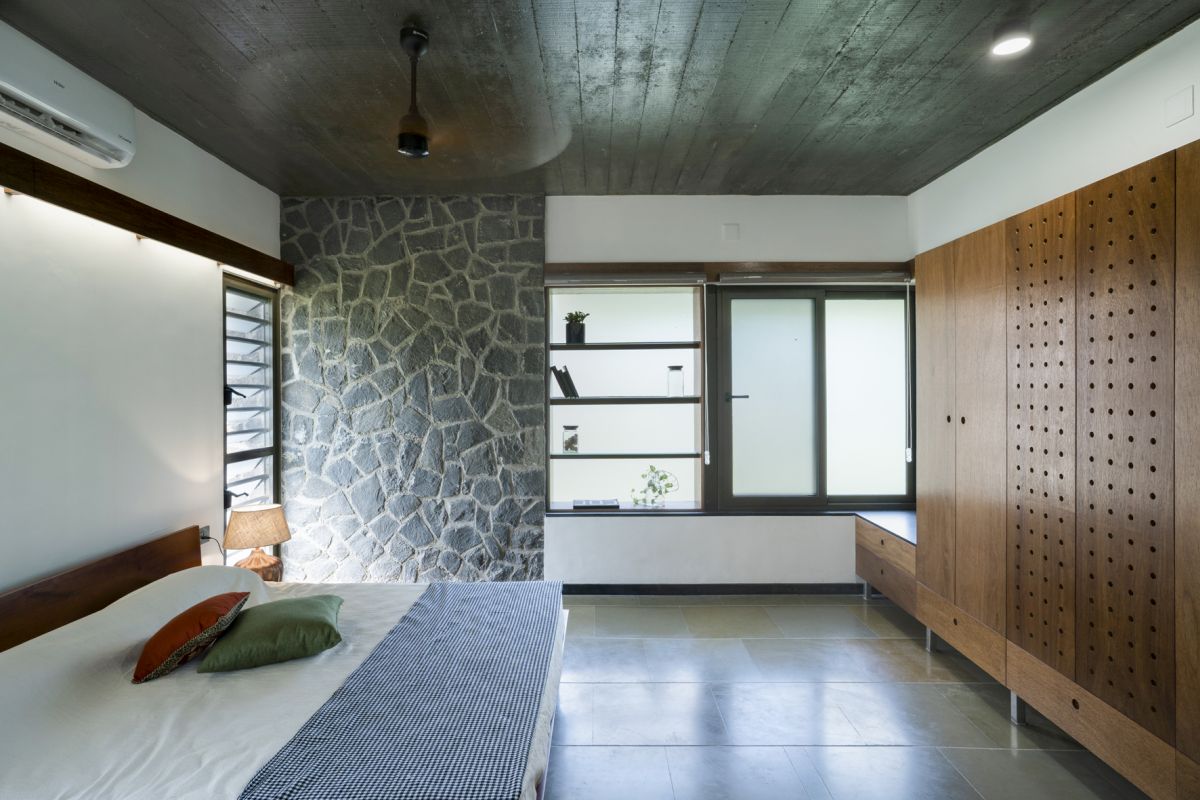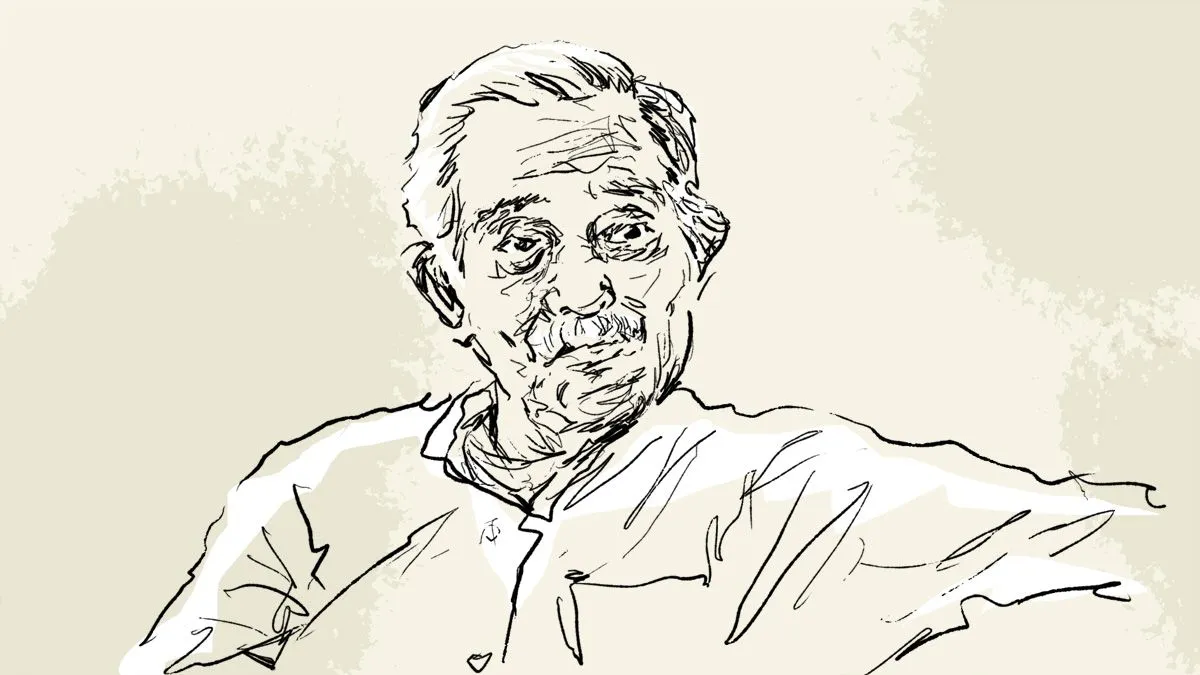The residence is for the family of a doctor who is much respected in Koothattukulam, in central Kerala. The land is on the outskirts of the town amidst a landscape of paddy fields, undulating hillocks and farmlands.
A small ancestral home existed on-site alongside intense farming activities when we first visited. There was even a fish pond that was supposed to get expanded into an aquaponics circuit. They wanted a weekend space that would let the larger family congregate once in a while, while still maintaining the farming culture of the land. The existing contour of the site was such that the old house was sitting within what became a pit as the rest of the land level was raised over the years, and the fish pond was rather secluded towards the northern side due to a steep drop.
Our first instincts were those of landscape, strategies to connect the disjointed sites within the larger site: the pool and the adjoining wall were the first elements that came into our imagination – forming a couple that at once became the creators of the private garden screened from the road and also generating the gently negotiated stepped section connecting the separated levels on the site. Next in line of appearance was the intensely intimate family space – the large poolside veranda, the family living and dining room, and also the opening up of the main bedrooms into this space. The further wing of the house was turned at an angle to establish a connect with the estate lands that belonged to the family on the adjoining western side. The eastern entrance zone mirrored this twist to complete the concave aspect on the southern side of the house, which was to accommodate the service spaces, including an outhouse.
The house itself is essentially an expansive roof volume. The walls move in and out of this volume to create smaller zones of privacy. Within the expanse, it’s the angularity that brings about a certain degree of privacy for some of the spaces. The main volume however is configured as a rather intimate living organism with varying expanses and fenestrations that connect the top to the bottom, the front to the rear and the deeper insides of the house to the landscape. Even the main bedroom is designed to open up to this living zone – the possibility of the couples’ grandchildren running in and out through the in-between seat-shelf.
The materiality of the house arises mainly out of the geometry of the roof, with infills forming varying degrees of control. Stone came into the palette when somebody the family knew from 2 km away wanted to get rid of some, on their land and it formed the zone defining wall surfaces. Most surfaces remain warm and textured to maintain the proximity to the land.
The landscape, which is the key to the project, is what will take some years to mature and reappear into the site to give life to this imagination.
Videos –
Drawings –
Project Facts –
Project Name – Dr. Maani House
Project Firm – RGB Architecture Studio
Category – Residential
Client – Dr. James Maani
Architecture Firm – RGB Architecture Studio
Principal Architect – Ar Kunjan Garg
Architecture Team – Ar Raj Menon, Merin George, Vivek Subramanian, Yadhukrishnan
Site Area – 1.2 Acres
Area – 3800 Sq Ft
Year of Completion – 2020
Location – Koothattukulam
Photographer – Syam Sreesylam


